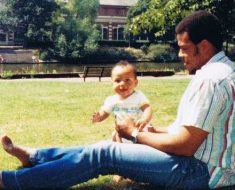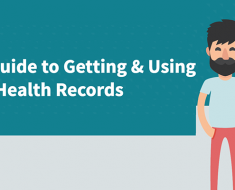Cesarean deliveries are common, accounting for an estimated 31.9 percent of all deliveries in the United States. Although common, a cesarean delivery involves major stomach surgery.
The procedure can be lifesaving for both the mother and baby, but it can carry risks and may take a long while to recover from afterward.
Self-care, setting reasonable expectations, and having a supportive medical team can make the recovery from a cesarean section easier.
What to expect after a cesarean delivery

Many guides suggest that full recovery from a cesarean delivery takes 4 to 6 weeks. Yet every person is different, and much research suggests a significantly longer recovery time. Some studies, for example, have found that 60 percent of women have some pain in the incision 24 weeks after delivery.
A trusted doctor, a supportive community of other people who have had cesarean deliveries, and a willingness to ask questions can help with understanding the recovery process.
Immediately after delivery
Most women undergoing a cesarean delivery receive an epidural or spinal block. This form of anesthesia numbs the body but still allows the person to be awake.
It can take several hours to regain feeling after an epidural. It will not be possible to walk or use the bathroom without assistance, during this immediate postoperative period. Most women will have a catheter for several hours after delivery to help them urinate.
If general anesthesia is needed, waking up can take some time. A woman may feel groggy, nauseated, afraid, or confused as she comes out of anesthesia.
For many new parents, the most significant concern is the baby. It used to be routine for hospital staff to take the baby from the mother following delivery. Now, many hospitals offer so-called gentle cesarean deliveries.
Gentle cesarean delivery means that if the baby is doing well, it can be left to rest on the mother’s chest or be held by another caregiver while the surgeon sews up the incision in the mother’s abdomen.
It is important for people to ask if this is an option before the procedure, and to communicate their wishes about the care of the baby with medical staff.
The first 24 hours
The first 24 hours following a cesarean delivery present many of the same challenges as a vaginal delivery. These include the mother adjusting to new parenthood, attempting breastfeeding, and fielding visitors. People who undergo cesarean deliveries face additional challenges.
Most people recovering from a cesarean delivery stay in the hospital 2 to 4 days.
Blood clots
One of the biggest risks of cesarean delivery is developing a blood clot in the leg. This is more likely in people who are overweight or who remain immobile for long periods.
Women who are unable to walk may have special cuffs on their legs designed to keep the blood moving. Otherwise, if they are able to walk, it is essential for them to get up and move around as quickly as possible.
Cramps
In the first 24 hours, it is common to feel pain at the site of the incision. Many women also feel post-birth cramps as the uterus shrinks. These sensations feel similar to menstrual cramps, but may be more intense.
Watching for infection
A nurse or doctor will carefully monitor the cesarean incision for signs of infection. They will also check vaginal bleeding. Even after a cesarean delivery, the uterus has to shed what is left of the pregnancy. Vaginal bleeding usually lasts 4 to 6 weeks after birth and is heaviest during the first days.
The first weeks
The risk of infection is highest during the first few weeks. Dangerous bleeding, which is known as a hemorrhage, is also more likely during this time.
People should avoid returning to their normal exercise levels for 6 to 8 weeks. Driving is usually not safe for 4 to 6 weeks also.
The wound may feel sore for a week or two. The muscle surrounding the wound may also feel weak. A doctor may prescribe pain medication for the first 2 weeks. People should ask their doctor about the safety of nursing while taking pain medication.
The symptoms tend to get steadily better as the incision heals and the uterus contracts.
In most cases, doctors use dissolvable stitches. These will disappear, and the doctor will not need to remove them. In some other circumstances, a doctor may need to remove non-dissolvable stitches, usually a few weeks after birth.
Long-term recovery
Recovering from a cesarean delivery takes time and may take longer than a doctor or midwife says it will. Some women experience muscle or incision pain for several months. Others struggle with urinary incontinence due to weakened pelvic floor muscles.
While these challenges are common, people should not ignore them. Any unpleasant symptoms that persist after the first postpartum appointment with a doctor or midwife warrant another appointment.
A referral to a specialist, such as a pelvic floor or exercise therapist, can help with long-term recovery.

Every cesarean delivery is different. Recovery may take longer when someone has a cesarean delivery as an emergency procedure. Infections, problems with the incision, and underlying health problems, such as diabetes, may also make recovery times longer.
The most important thing a person can do to recover more quickly is to talk to their healthcare provider. They should ask lots of questions about what to expect, then follow the recommendations they receive.
People can speed up their recovery from a cesarean delivery with the following methods:
1. Get plenty of rest
Rest is vital for recovery from any surgery. Yet for many new parents, rest is nearly impossible with a newborn in the home. Newborns keep irregular hours and may sleep for only 1 or 2 hours at a time.
People should always try to sleep when the baby sleeps, or get help from a loved one so they can take a nap.
It is easy to feel overwhelmed by chores or to want to entertain visitors. But giving up sleep to put away dishes or keep the house clean can be damaging to someone’s health. It is more sensible to try to sleep as much as possible.
2. Ask for help
Newborns are demanding. Caring for a baby after major surgery can be exhausting, and it is not possible for all new parents to manage this alone. Ask for help from a partner, a neighbor, family, or a trusted friend.
People may benefit from lining up a meal train or a schedule of visitors who can watch the baby while they rest or take a shower.
3. Process your emotions
Giving birth can be an emotional experience for all involved.
Women who experience emergency deliveries or traumatic births, as well as those who have cesarean deliveries they hoped to avoid, may have to process difficult emotions about the birth.
These new feelings can make the transition to parenthood more difficult than it is for others, and can trigger feelings such as guilt and shame.
Many people benefit from getting help with processing these emotions.
Talk to a partner, friend, or therapist. Getting early support may help reduce the risk of postpartum depression and can help women experiencing postpartum depression to get quicker treatment.
Consider joining an in-person postpartum support group. If none are available, try taking part in online support networks. An example of this is Postpartum Support International, which offers weekly online support meetings.
4. Take regular walks
Lifting and intense aerobic exercise are out for the first few weeks of recovery. As an alternative, walking can help with staying fit and maintaining good mental health.
Taking a walk also reduces the risk of blood clots and other heart or blood vessel issues. Some new parents like walking with other new parents as part of a group, or meeting up with a neighbor to push their babies in their strollers.
5. Manage pain
There is no need to be in pain while struggling with all the other demands of new parenting. People must take the pain relievers prescribed by their doctor. If they do not work or if the pain gets worse, they should contact a healthcare provider for advice.
6. Watch for signs of infection
Some doctors will ask new parents to take their own temperature every 24 hours to monitor for signs of infection. People can consult with their doctor or midwife to ask if this is a good strategy.
Also, people must be mindful of other signs of infection, such as swelling, intense pain, red streaks coming from the incision, or chills. Contact a doctor or go to the emergency room if these symptoms appear.
7. Fight constipation
The combination of hormonal shifts, weaker stomach muscles, and spending lots of time lying down can lead to constipation. Severe constipation can be painful, and straining can injure the cesarean delivery incision.
Drink plenty of water and ask a doctor about taking a stool softener. Eating plenty of fiber-rich foods, such as fruit and vegetables, can help to prevent constipation.
8. Get support for breastfeeding
Having a cesarean delivery is linked to a higher risk of breastfeeding difficulties. A lactation consultant can help new parents successfully breastfeed, even when they face obstacles, such as separation from the baby after birth. If breastfeeding is not going well, people should ask for help.
If a new parent is in pain, sitting in a comfortable, supportive chair and using a breastfeeding cushion, or nursing in a laid-back, reclining position can make breastfeeding easier.
9. Seek help for long-term issues
Some women experience long-term pain after cesarean delivery. Others experience muscle weakness, incontinence, or depression. These issues are common, and people should not feel ashamed if they have these experiences. Nor is there any need to suffer in silence.
If symptoms continue after the final postpartum appointment, a new mother should contact a doctor or midwife. They may then receive a referral to a specialist or be offered tips for resolving symptoms at home.

After a cesarean delivery, people should call or see a doctor if they experience the following:
- intense uterine cramps
- uterine cramps that go away and then return
- difficulty urinating
- frequent headaches
- anxiety or depression
People should go to the emergency room if they experience:
- bleeding that soaks through more than one pad or tampon per hour for more than 2 hours
- signs that the incision has ruptured, such as bleeding or oozing from the incision
- thoughts of harming themselves or their baby
- intense calf pain, especially if accompanied by swelling or numbness in the feet
- shortness of breath

Summary
The transition to parenthood can be difficult, especially when someone is recovering from major surgery. A supportive family or group of friends, caring medical staff, and reasonable expectations can make the recovery journey and the transition to parenthood feel more manageable.
Many women recovering from a cesarean delivery worry about the risk of surgery in a future birth.
A generation ago, a prior cesarean delivery meant that all subsequent births had to be surgical. Now, the American College of Obstetricians and Gynecologists (ACOG) recommend that vaginal birth after cesarean, or VBAC, can reduce the risk of childbirth complications.
Most research suggests that 60 to 80 percent of women who have cesarean deliveries can have successful vaginal deliveries.
Source: Read Full Article





